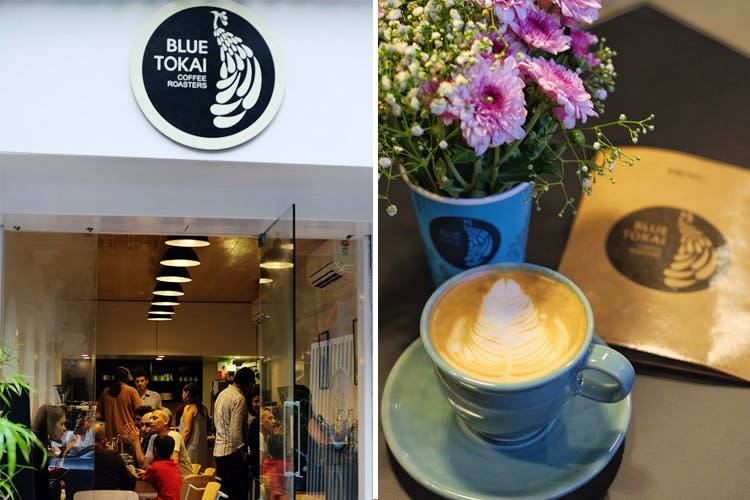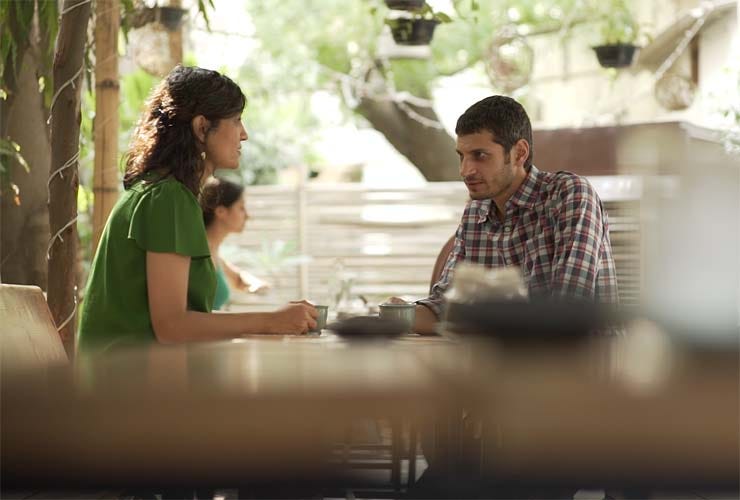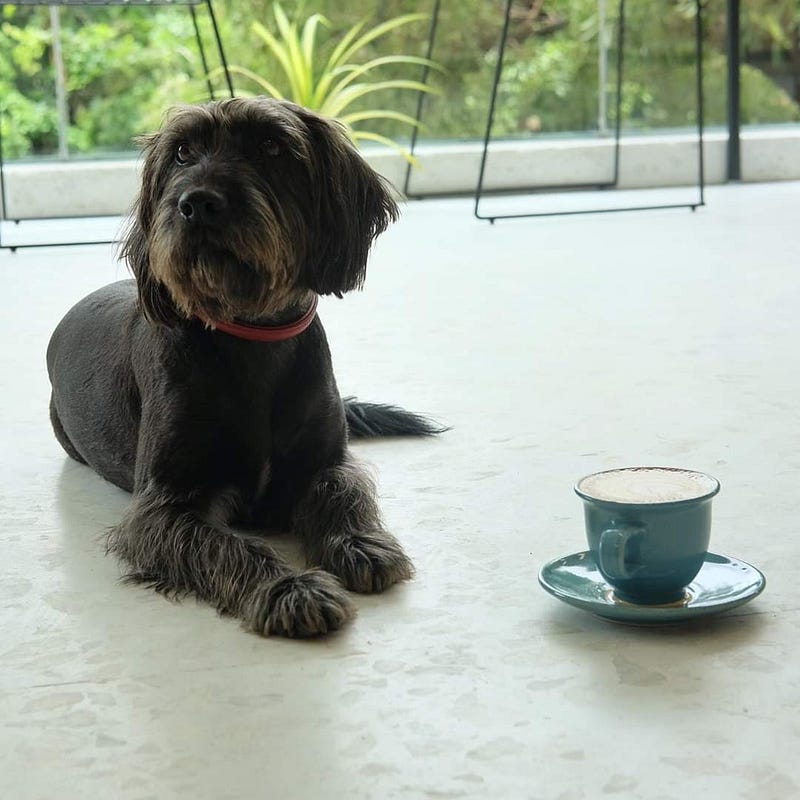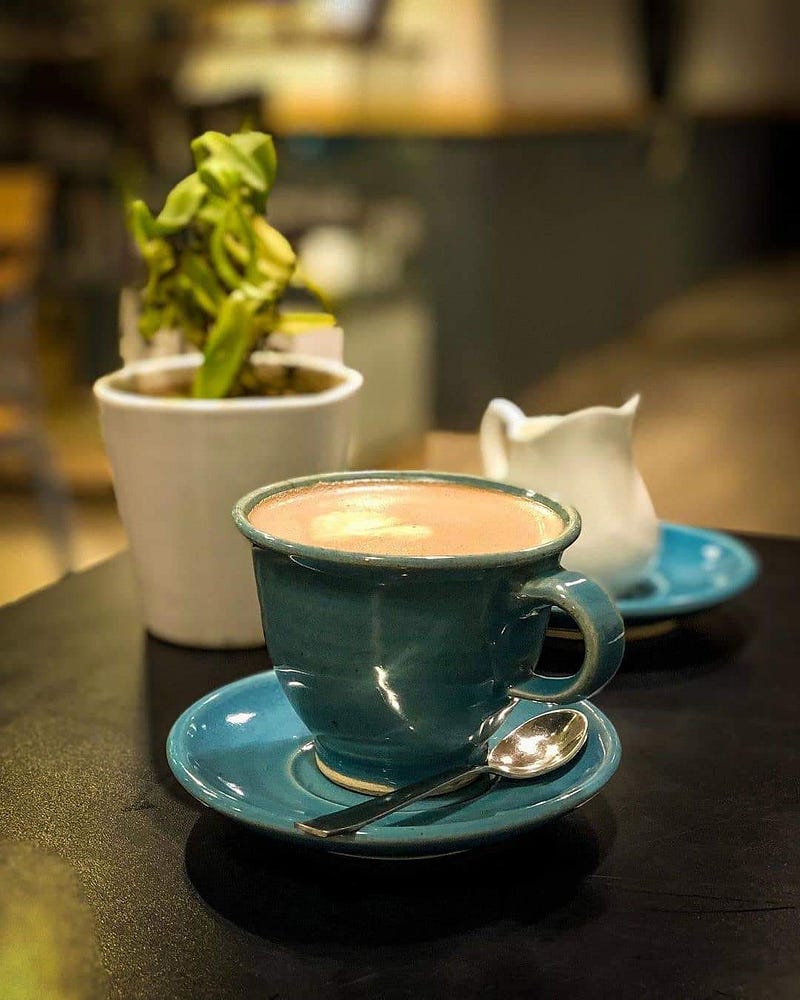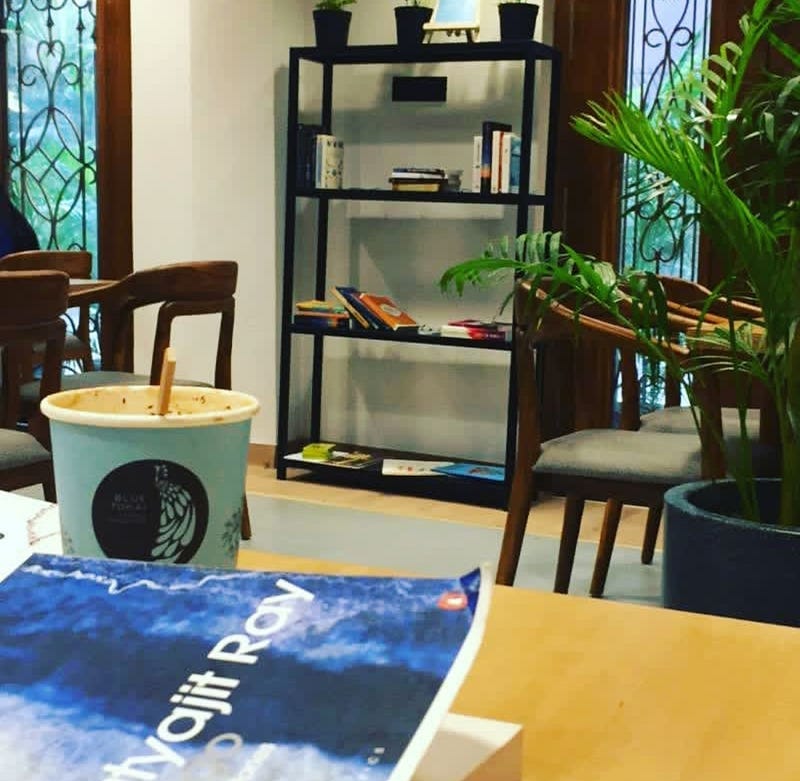Spilling the Beans on Blue Tokai Coffee Roasters — Matt Chitharanjan
What merely began as a passion or a hobby has bloomed into a flourishing online coffee business , popularly known as Blue Tokai Coffee…
What merely began as a passion or a hobby has bloomed into a flourishing online coffee business , popularly known as Blue Tokai Coffee Roasters.
Blue Tokai Coffee Roasters
Our mission since we started has stayed simple: introduce our customers to the estates we directly buy our great…bluetokaicoffee.com
Started in 2013 when Co-Founders Matt Chitharanjan and Namrata Asthana moved to Delhi from Chennai, the dearth of freshly roasted, high-quality Arabica coffee pushed them to contact estates who were growing high-quality coffee.
From humble beginning in a home’s 2 spare rooms — to now more than 25 cafes, over 300 employees, and partnerships with over 25 Indian coffee estates, Matt Chitharanjan and Namrata Asthana are hoping to change a fraction of India’s huge tea drinking population into Coffee Maven.
Blue Tokai Coffee Roasters
We look forward to seeing you at our cafes to enjoy carefully prepared espresso drinks, a rotating selection of…bluetokaicoffee.com
To the outsider, it looks like an ideal entrepreneur setup — to sell a coffee experience with your partner. “People think we’re spending our days, testing out coffees and travelling to coffee plantation. The reality is that we’re dealing with paperwork, managing people or staff, dealing with clients, and negotiating with suppliers. It’s not so glorious.” says Matt.
I had such a great time talking with Matt & Namrata, I know few of my readers will find this to be inspirational and insightful especially if they are a coffee pro/enthusiast or business owner in a producing country.
More about Matt and Namrata:
Namrata Asthana
Namrata graduated from Vanderbilt University with a major in Psychology and a minor in Anthropology.
After working in design at Chicago, she moved to Delhi to work with the American India Foundation where she managed the Service Corps Fellowship (now the Clinton Foundation Fellowship) for three years.
Later she has worked with PepsiCo India as the Communications Manager for four years and later moved onto working as Communications Director for the Centre of Development Finance at the Institute of Finance Management and Research(IMFR)
Matt Chitharanjan
Matt graduated from NYU’s Stern School of Business with a B.S. in Finance.
He has corporate/industry experience in the area of Economic Research and Real Estate Investing for a boutique consulting firm and hedge fund in Berkeley, California before pursuing an M.A. in Economics from The University of British Columbia.
After graduating, he spent few years working on impact evaluation in international development in Jordan and the U.S. before moving to India to work on SME access to finance research with IFMR.
Top Rules for Startup Founders | Data Driven Investor
When setting up a company, most founders are so focused on getting the business off the ground, that they can easily…www.datadriveninvestor.com
Excerpts from the Interview :-
Q1) Hi Matt, thank you for doing this interview with me. I am really thrilled to have you for this collaboration. Can you tell our readers here about the significant role models or existing business you looked up to in your life when you were just starting Blue Tokai? How they had influenced your journey as far as an entrepreneur?
Matt : I’m from the US and I’ve been a coffee drinker from a fairly young age. When I was growing up, my parents were initially drinking instant coffee but then started getting some beans from some mainstream coffee companies and grinding at home. When I was in college, I drank Starbucks regularly and after graduating I moved to San Francisco. At that time, specialty coffee was really taking off — because of the blue in our name I think people assume we are trying to be Blue Bottle and I definitely did visit their stores but there were many coffee roasters starting up and I ended spending most of my time at Ritual Coffee Roasters. They had the roastery in the café, the baristas were knowledgeable but not arrogant and, most of all, the place was friendly.
Q2) When did you realize you wanted to start Bluetokai and get into the coffee ecosystem?
Matt : In 2012, Namrata and I were both at points in our careers where we wanted to do something on our own and were also at points in our lives where we didn’t have a mortgage or kids which would have made it harder to leave the financial stability a job provides. We started looking at different ideas for what we could do — starting a microbrewery and growing mushrooms were some of the initial options we looked at but ultimately rejected for various reasons — and settled on coffee as it was something we both loved to drink and were having a hard time finding for ourselves as consumers.
Q3) How did you come up with the name Blue Tokai? What is the back story attached to it? What is the etymology of the word “Blue Tokai”?
Matt : From the beginning, we’ve wanted to showcase great Indian coffee so it was important to us to have a brand identity that reflected the coffees origins. Namrata is really driver of all of the creative aspects behind the brand. She had made the logo herself a few years before we started for a personal project and it felt perfect for our new coffee business. “Tokai” is an old Malabar word for the plume of the peacock, and apart from being the national bird of India, you’ll frequently see peacocks around coffee estates.
Q4) I couldn’t help but wonder that, have some of your personality traits or past academic and corporate background helped you in building the brand? I am assuming your background in Finance and Economics must have helped you in analyzing the business or micro/macro-economic environment. What about the aesthetic aspect? Who took care of it? How did you came up with the logo and artistic packaging and managed the social media handles?
Matt : We actually did very little market analysis before starting. The fact that we wanted to drink good coffee but couldn’t find it was the impetus for starting and we felt there would be other people like us who would be looking for the same. I would definitely say that having a finance background is helpful. At the end of the day, this is a business and so being able to make models, analyze margins and financial reports and make sound financial decisions is helpful. I mentioned this is the previous question, but the aesthetic comes from my partner, Namrata. One of our first arguments was over the packaging as I felt our packaging was getting too expensive with the design and artwork. Luckily she prevailed and having a design-focus is something that we have embraced and has become part of our brand.
Q5) For most individual, coffee is pretty simple. It’s that bitter hot brown wake up juice that we gulp first thing in the morning until we are able to open our eyes and function. But I am now officially curious how the coffee is transformed from a humble bean picked at a coffee plantation to the tasty steaming brew in front of us. Please tell our readers here the steps involved in the coffee process and how each step can impact the flavor and quality.
Blue Tokai Coffee Roasters
Learn Brewing Learn to brew the perfect cup of coffee using a variety of different methods and equipment. If you don't…bluetokaicoffee.com
Blue Tokai Coffee Roasters
Starter Kits Ideal for those who've always wanted to brew a cup of coffee but didn't know where to start from. Choose…bluetokaicoffee.com
Matt : Books have been written about the topic but the short version is that coffee is the seed of a fruit and the varietal of that fruit, the growing practices, the altitude and the climate will all impact the quality. You want to pick the cherry at the peak level of ripeness, without letting it over ripen and all the estates we work with do multiple rounds of picking to ensure this happens. After picking, how you process the coffee will have a large impact on the flavor. Washed coffees have the outer skin of the fruit removed before going in to fermentation tanks where yeast eats the remaining mucilage and then the seeds are dried. In natural processing, the cherries go directly to the drying yard and the seeds are removed mechanically. Natural processing is cheaper but tends to have more off notes as its harder to remove defect beans. Now coffee growers are doing a lot of experimentation on the fermentation side and doing hybrid processing methods that are producing excellent and complex coffees.
After the coffee is done drying, it goes to a curing works where a hard skin called parchment is removed and the coffees get sorted and graded before going out to roasters.
The roasting process transform the green coffee so that the flavors can be extracted when it’s brewed. Different roast profiles will create different flavors and each roaster has their own style of roasting. Roasters also have the ability to introduce roast defects which can add harsh and astringent flavors to the cup.
The last step is brewing. Grinding fresh will almost always lead to a more flavorful coffee, as many of the flavor compounds dissipate after grinding. From there it’s about having the right recipe and technique that extracts the flavours that you want from the coffee. Some coffees and some brewing methods are more forgiving than others — cold brew for example has a wide range to brew a decent drink, whereas espresso is much less forgiving.
In terms of quality, I think the most important point to note is that coffee quality can only go down in each step. A roaster cannot do some magic to make low quality green coffee specialty grade and the same is true of a barista. Similarly, a roaster can destroy a high scoring green coffee with a bad roast profile and a barista can take the best roasted beans in the world and brew a bad cup with poor technique.
Q6) What are the different kinds of Coffee Beans you found while sourcing?
Blue Tokai Coffee Roasters
Blue Tokai Coffee brings you fresh single estate 100% Arabica coffee beans, roasted with care, from the best farms…bluetokaicoffee.com
Matt : We’ve been almost exclusively focused on Arabica due the better flavor profile. I’m not against Robusta at all and feel that climate change will make it the future of coffee but at the moment we are still looking for a Robusta coffee whose flavor will meet our requirements. Within Arabica there are more than a dozen varietals commonly available in India and each estate has its own unique climate conditions, growing practices and post-harvest practices creating a wide variety.
Q7) Tell our readers here most interesting facts about coffee which you discovered after getting into business.
Matt : I think most people don’t know that there is only one coffee harvest per year in India — it is not a crop that yields fruit throughout the year.
Q8) Can we say that Blue Tokai coffee and generic coffee have no significant differences? What were the challenges in educating customers about your vision?
Matt : If there was no difference then definitely our company would have had no reason to exist. There is a niche set of customers who are already aware of the difference between specialty coffee and commodity coffee and while our initial focus was on targeting these people, as we’ve grown our focus has shifted to try to widen the appeal and awareness of what makes good coffee. For many people instant coffee is the only type of coffee they know so, first we need to overcome the perception that all coffee dissolves in water and from there it’s about changing the idea that its difficult or expensive to brew coffee at home.
Q9) In a country of tea drinkers and instant coffee, running a successful niche coffee brand isn’t a cakewalk. Do you agree with this? How Indian consumers have been steadily changing their patterns of drinking coffee. Please share your views.
Matt : I don’t think running any business in India is a cakewalk but definitely as India has grown and developed consumers are increasingly interested in higher quality, locally produced products. We see this not just with coffee but consumer products in general. For coffee specifically, we’ve definitely seen consumers increasingly appreciate the quality of coffee that is grown and roasted in India, whereas I think 10 years ago, there was definitely more of a perception that you had to get imported coffee to have a high quality cup.
Q10) What according to you is a perfect cup of coffee?
Matt : I often get asked this question but I feel that the idea of single perfect cup doesn’t exist. Everyone’s flavor preferences are different and even if I look at my own preferences, at different times, I enjoy different coffees. Generally, I prefer coffees with complex fruit flavors and very little roast notes and so light roasted pour overs are a good bet, but there are times in the day where I enjoy the speed and strength of an Americano.
Q11) I was wondering why coffee should be consumed within three-four weeks of being roasted.
Coffee Storage 101
Customers are constantly asking us whether they should store their coffee in a fridge or freezer, or if their coffee is…bluetokaicoffee.com
Matt : There are actually thousands of flavor and aroma compounds in a cup of coffee that make it taste good. The problem is that many of these are very volatile and dissipate when exposed to oxygen. In normal storage conditions, where the coffee is in a fairly air-tight container and is exposed to oxygen only when the container is opened to make a cup, you’ll notice that most coffees will begin to taste one-dimensional after that 4 week time frame. There are a few things you can do to preserve the coffee (freezing, vacuum sealing, nitrogen flushing) and those can extend the time frame by several weeks and even months, but once the bag is opened the oxidation process will begin so you need the consume the coffee quickly.
Q12) What were the difficulties that you faced in establishing the business in the Indian markets? Was it difficult initially to convince farmers to part with their A-grade beans to an Indian coffee start up? What hurdles you overcame and won the trust of the farmers? More generally, what are the difficulties that the Indian start-ups culture face?
Blue Tokai Coffee Roasters
Our mission since we started has stayed simple: introduce our customers to the estates we directly buy our great…bluetokaicoffee.com
Blue Tokai Coffee Roasters
Our Farms We believe in building long term relationships with the farms that grow the coffee we love to roast. After…bluetokaicoffee.com
“We believe in building long term relationships with the farms that grow the coffee we love to roast. After tasting a range of coffees from each farm, we carefully selected our favorites.”
Matt : Initially there was some skepticism on the part of the growers, which is completely understandable. They weren’t used to the idea of an Indian roaster wanting to buy their highest quality beans and also putting their name on the coffee. So the initial sourcing was a bit of a challenge, but once they saw both our commitment to producing a high quality product and the customer response, they were pleased. Ultimately, our coffee will only be as good as the green beans we source and we think it’s very important that farms we work with get the recognition they deserve for their product. At the same time, it was definitely a risk for them to sell to us. If we roasted the coffee badly or delivered a poor customer experience, their names would also be associated with that. In the end, I would say it worked out well for both sides and we continue to source coffees from nearly all of the estates we first started working with 8 years ago.
Q13) There are cafes like Starbucks, Costa and Café Coffee Day and then there are Companies like Nescafe and Bru. Are you trying to find a mid- way between these in lines of what you do? What is your take?
Matt : I think cafes and the instant coffee companies are targeting different consumers and use cases and so they aren’t really on the same scale for there to be a mid point. We are trying to appeal to consumers in each of these markets who are looking for more flavor and a deeper connection to the source of what they consume. On the café side, the faster Starbucks expands the better it will be for our business. Starbucks gets consumers habituated to a better coffee experience than the chains that were operating before it opened and they also charge a premium for it. However, the coffee they serve is not specialty, so when their consumers are looking to move to something more flavorful, they come to a brand like ours.
Q14) Books and coffee go so well together. Have you ever thought of having a literary event or organizing a book club or author’s meet at the café?
Matt : We have done quite a few literary events at the cafes over the years and have hosted several authors. We’ve recently done a book club series, #BlueTokaiBookClub, on our social media channels and given the response to that, we’re in the process of making it a more permanent offering.
Q15) What are some of the future goals for Blue Tokai? Keeping COVID — 19 situation in mind, what will be the fate of the city’s vibrant café culture, what is your outlook?
Blue Tokai Coffee Roasters
We are following government directives as well as best practices to prevent the spread of COVID-19. The well-being of…bluetokaicoffee.com
Matt : Prior to Covid, we had planned to expand our café count to nearly 100 across the country. Now those plans are on hold and we are focusing on e-commerce and new product development. For the new products we are focusing on sourcing and roasting coffees that continue to push the quality score higher, but at the same time trying to broaden the appeal of specialty coffee by making it more convenient. We recently launched single serve sachets that require no additional equipment to brew so coming out with more products that are either ready-to-brew or ready-to-drink is a focus for us.
Q16) What is that one piece of advice that you would like to give to start-ups coming up nowadays?
Matt : Be profitable as soon as possible and stay that way.
Thank you all for reading and a big thanks to Matt & Namrata for collaborating in today’s post!
It’s a pleasure!
If any of my readers here , wish to know more about Blue Tokai and everything related to Coffee A-Z or Matt/Namrata vision’s. Do open the links mentioned below . They have a wonderful informative , articulated and well-curated website. It has all the essential details about their blogs , online merchandise and offerings.
Website : https://bluetokaicoffee.com/
Instagram : https://www.instagram.com/bluetokaicoffee/
LinkedIn: https://www.linkedin.com/company/bluetokaicoffeeroasters/
Twitter Handle : https://twitter.com/BlueTokaiCoffee
Facebook : https://www.facebook.com/bluetokaicoffee/



